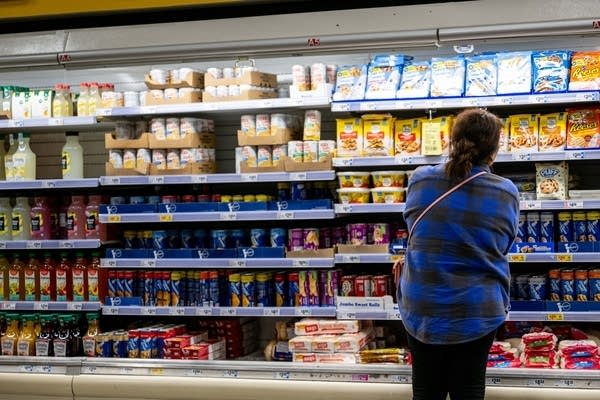Why aren’t all gas tanks on the same side of the car?
Consumer preference and safety concerns are just two of the factors that go into determining where the fuel filler is located.

This is just one of the stories from our “I’ve Always Wondered” series, where we tackle all of your questions about the world of business, no matter how big or small. Ever wondered if recycling is worth it? Or how store brands stack up against name brands? Check out more from the series here.
Listener Randolph Polk from Little Rock, Arkansas, asks:
Why aren’t all gasoline tanks located on the same side of the car? This can be very annoying when you switch cars with your spouse and drive up to a gas pump. In my car, the gas tank is on the left side, but it’s on the right side in my wife’s van, and the situation was reversed on our previous cars!
When you’re shopping for a car, the make and model are likely the first characteristics you notice.
But a sometimes-overlooked element is the gas tank placement. As our listener Randolph pointed out, its location is inconsistent.
Marketplace reached out to auto engineering experts, finding that consumer preferences, and highway design in the primary countries where a car is sold, are two of the factors that determine gas tank placement.
Ford’s history with door placement
By the 1970s, Ford was generally putting its fuel filler on the passenger’s side, explained Art Hyde, who worked at Ford for 40 years in multiple roles, including chief engineer.
Ford had based that location on a study that said there were more T-bone, or side-impact, crashes on the driver’s side of a car than the passenger’s side, said Hyde, who’s now an associate professor of practice at the University of Michigan’s College of Engineering and the director of the college’s automotive engineering program.
A ruptured gas tank could leak fuel, creating a fire hazard.
Hyde played a key role in studies at Ford on T-bone accidents, one conducted in the 1980s and another in the 1990s. That research found that there was no statistical difference between the number of accidents on the driver’s side and the passenger’s side.
“There was a belief that it was safer to have it on the other side, the passenger’s side, but there wasn’t really any data to point to,” Hyde said.
Consumer preference and safety concerns
Ford also conducted market research in the 1980s to find out where car drivers preferred the gas tank, Hyde said.
The answer was the left side because of the shorter distance to the gas pump, but the research found that because of that proximity, drivers were hitting their doors against the cement pump islands.
People didn’t like that their cars were getting damaged, Hyde said.
So Ford put fuel fillers on the driver’s side and made its car doors more resilient. “It wasn’t engineering data that said to make it one way or the other,” Hyde said.
Today, 98% of Fords have fuel fillers on the driver’s side.
Some truckers feel strongly that the fuel tank shouldn’t be on the driver’s side, Hyde noted, since they don’t want to risk denting their trucks and they’re not using gas pumps as often as car drivers.
Highway design is another factor car manufacturers take into consideration when placing gas tanks.
Bharat Balasubramanian, former head of research at what is now Mercedes-Benz Group AG, said autobahns, or highways, in Germany — where Mercedes is headquartered — generally only have a right shoulder (if at all) and they largely have no speed limits. People drive on the right side of the road, like in the United States.
You don’t want to fill a gas tank on the left side of the car, where you’d be vulnerable to speeding traffic, explained Balasubramanian, who’s now executive director at the University of Alabama’s Center for Advanced Vehicle Technologies. That’s why you’ll mostly find fuel tanks on the right side of these cars.
But wherever the carmaker puts the tank, it has to make that decision early.
“It is so integral to the design of the vehicle,” Hyde said.













